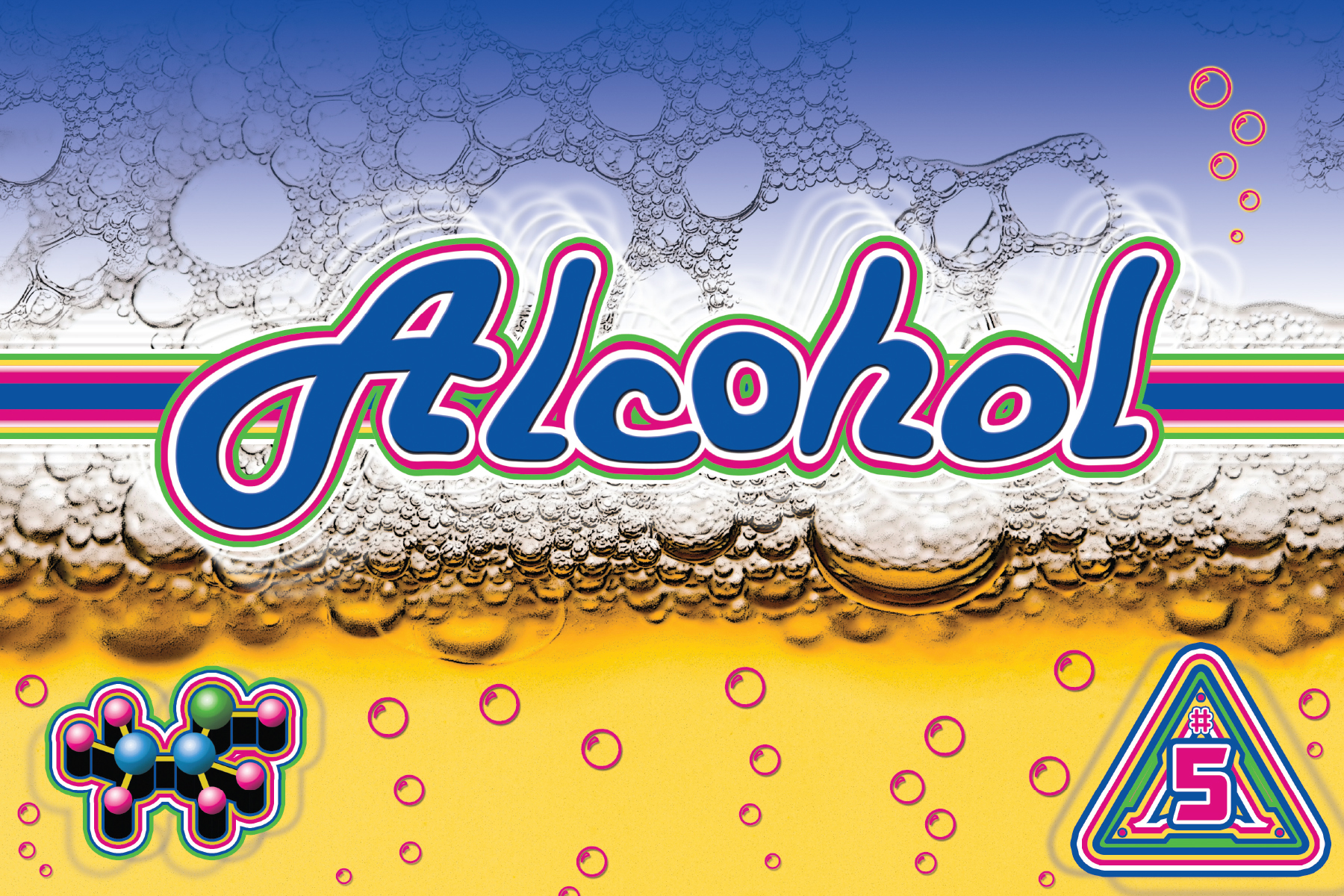
Alcohol
Post Date: February 7, 2014
Rachel Clark2023-03-28T16:19:36-07:00
Alcohol
What is alcohol?
- Alcohol (“ethanol”) is a depressant drug, meaning that it slows down heart rate, lowers blood pressure, and causes sedation.
- Alcohol is a natural product of fermenting sugars. It is usually made from grains such as hops, barley, rice and fruits, but it can also be made from other plants.
- Alcohol has been used for thousands of years by cultures around the world. Even animals are known to eat fermented fruits with the apparent intention of altering their consciousness.
What are the effects?
- Low to moderate amounts of alcohol can produce feelings of relaxation, lowered inhibitions, and increased sociability. This is the stage known as being “buzzed” or “tipsy.”
- Larger amounts can cause dizziness, nausea, slurred speech, slow reflexes, sleepiness, impaired judgment, dehydration, and hangovers. This is the stage known as “drunk.”
- Alcohol affects people differently, and can affect the same person differently at different times. Effects can vary depending on body weight, metabolism, tolerance from prior use, food in the stomach, and other physical factors.
- Alcohol hangovers happen differently for different people, but usually occur after consuming too much alcohol and/or being at altitude and/or being dehydrated. Hangovers typically involve nausea, headaches, and a feeling of mental stuffiness or irritability.
What is a typical dose?
- A standard “drink” is defined as 12 oz of beer, 5 oz of wine, or 1.5 oz of liquor (341 mL, 142 mL, and 85 mL, respectively).
- Wine and beer contain between 5% and 15% alcohol, while liquor usually contains up to 40% alcohol, and sometimes more.
- It is the amount of alcohol you drink, not the volume of liquid, that affects you. That’s why it’s always good to know the alcohol content of whatever you are drinking.
- Know your own limits and pace yourself! A standard drink is metabolized out of your system in approximately 1.5 hours. One person might be buzzed off of a single beer, while another person could be totally unaffected by 5 or 6 drinks.
- Alcohol’s effects are significantly compounded at higher altitudes.
Be careful!
- Drinking games that test consumption limits are especially dangerous, and have led to preventable deaths. It’s important to challenge the social norms that make people feel like they have to drink more than they want to. There are other ways to play these games that are just as fun (and result in less vomit)!
- Combining alcohol with other depressants like benzos, opioids, or GHB can quickly become fatal due to their combined effects on heart rate, blood pressure, and respiration.
- Chronic, heavy alcohol consumption can damage multiple organs, particularly the liver, brain, and kidneys.
- Like any drug, it’s possible to use alcohol compulsively and develop a problematic relationship with it. It may be a good idea to take a break if you find yourself regularly using alcohol as a coping mechanism, or feeling very anxious at the thought of going without it for a period of time. It is strongly recommended to use alcohol in moderation and avoid daily use.
- Alcohol also has quite a few interactions with non-depressant drugs, like ketamine (this mixture frequently produces severe spins and blackouts), SSRIs (which may make a person much more sensitive to alcohol), cocaine (cocaine and alcohol metabolize to create the toxic byproduct cocaethylene), and many more.
- Always check interactions individually. Some interactions can be generalized, but most of them can’t. Drug science is complicated!
More harm reduction tips
- Overdoses on alcohol are called alcohol poisoning. Alcohol poisoning can cause loss of motor control, vomiting, seizures, blackouts, loss of consciousness, and death under certain circumstances. “Sleeping it off” can be very dangerous if someone has alcohol poisoning.
- Try to always have water or electrolytes with you when you drink. Dehydration significantly worsens hangover symptoms and can be dangerous.

